Butternut squash are a popular type of winter squash grown in home gardens. Their vines can spread extensively along the ground, taking up a lot of space. This leads many gardeners to wonder – do butternut squash need a trellis?
This is the short answer: no, butternut squash do not need a trellis. But growing them up and down on a trellis has a lot of benefits that make it worth thinking about.
Benefits of Trellising Butternut Squash
Here are some of the top reasons why trellising butternut squash is advantageous
-
Saves space in the garden. Butternut squash plants can be grown much closer together when they are grown vertically—only 1 square foot apart. This lets you grow more squash (or other plants) in a small space.
-
Reduce disease and rot. Wet foliage encourages fungal diseases. Vines growing up a trellis dry out faster and stay cleaner. Meanwhile fruit doesn’t sit on wet ground, lowering the chance of rot.
-
Less maintenance. Fruit that is grown off the ground doesn’t need boards or bricks under it. Also, you don’t have to move any leaves or vines to look for bugs and diseases.
-
Looks great. The vining habit of squash makes for an incredibly decorative trellis.
-
Higher yields. With improved growing conditions, yields are often increased when trellising squash.
-
Easier harvesting. Trellised squash are cleanly presented at an easy picking height.
Best Varieties for Trellising
Almost all types of winter squash can be grown on a trellis, but some are better suited than others. The best ones to start with are:
- Acorn squash
- Delicata squash
- Smaller varieties like Butterbaby butternut
The heaviest winter squash varieties that might need extra support are:
- Large butternut squash
- Kabocha
- Large hubbards
All summer squash, like zucchini, grow very well on trellises too.
Setting Up a Squash Trellis
To get started, you first need to set up a trellis. The most important features to look for are:
- At least 5 feet tall, better if 6-7 feet tall
- Made of thin wire, string, or mesh for tendrils to cling to
- Enough space between supports for fruit to hang through
- Sturdy construction that can hold heavy vines
A cheap trellis can be bought online or at most garden centers. You could also make your own out of PVC, cattle panels, or wood.
Construct the trellis before planting seeds or seedlings. Install it facing north-south to give plants even sun exposure.
Growing Butternut Squash Vertically
Plant seeds or transplants 1 square foot apart at the base of the trellis. As vines start to ramble out, gently guide them onto the supports. Continue training the vines as they grow taller.
That’s really all there is to it! The vines will readily climb up without any complicated maneuvers.
Sit back and watch the vines extend up and over the top of the trellis. Flowers will appear, followed by the squash fruit. The vines and fruit do not need any extra support.
Maintaining Trellised Butternut Squash
Vertical butternut squash require very little maintenance – just the basics:
- Water regularly with drip irrigation or at soil level.
- Weed and mulch open areas at trellis base.
- Scout for pests and diseases. Remove them as soon as spotted.
- Prune excessive growth if needed.
The open structure of a trellis makes it easier to spot and manage pest and disease issues early. Powdery mildew is common. Help prevent it by improving air circulation and reducing wet leaves.
Harvesting and Storing Butternut Squash
Butternut squash can hang on the vines for a quite a while after maturing. Harvest when:
- Skin is tan and any green has faded
- Stem is dry and corky
- Fruit is very hard to pierce with a fingernail
- Heavy rain or frost is forecasted
After picking, cure squash for 1-2 weeks in the sun to harden skins for storage. Then store cured fruit in a cool, dry place for 2-6 months.
The vines, fruit, and open structure of a trellis makes harvesting clean and easy. No more crawling on the ground or digging under leaves to find hidden squash!
While butternut squash don’t require a trellis, most gardeners who try it end up sold on the benefits. It saves space, reduces disease, looks nice, and makes harvesting a breeze. With a simple homemade or purchased trellis, compact butternut squash can grow vertically in even the smallest home garden.

Construct a Sturdy Trellis
There are many trellis ideas and designs out there for all your aesthetic needs. For squash, I prefer something sturdy like cattle panels, because squash vines can get heavy! You can construct them straight, like a wall, or bend them into hoops for tunnels. We buy ours locally at Farm and Fleet, but you can get them at just about any local farm store.
To construct the trellis, pound 6-foot t-posts into the ground about 5 feet apart. Secure the panels about a foot off the ground with wire or zip ties. We use both–just depends what we have on hand.
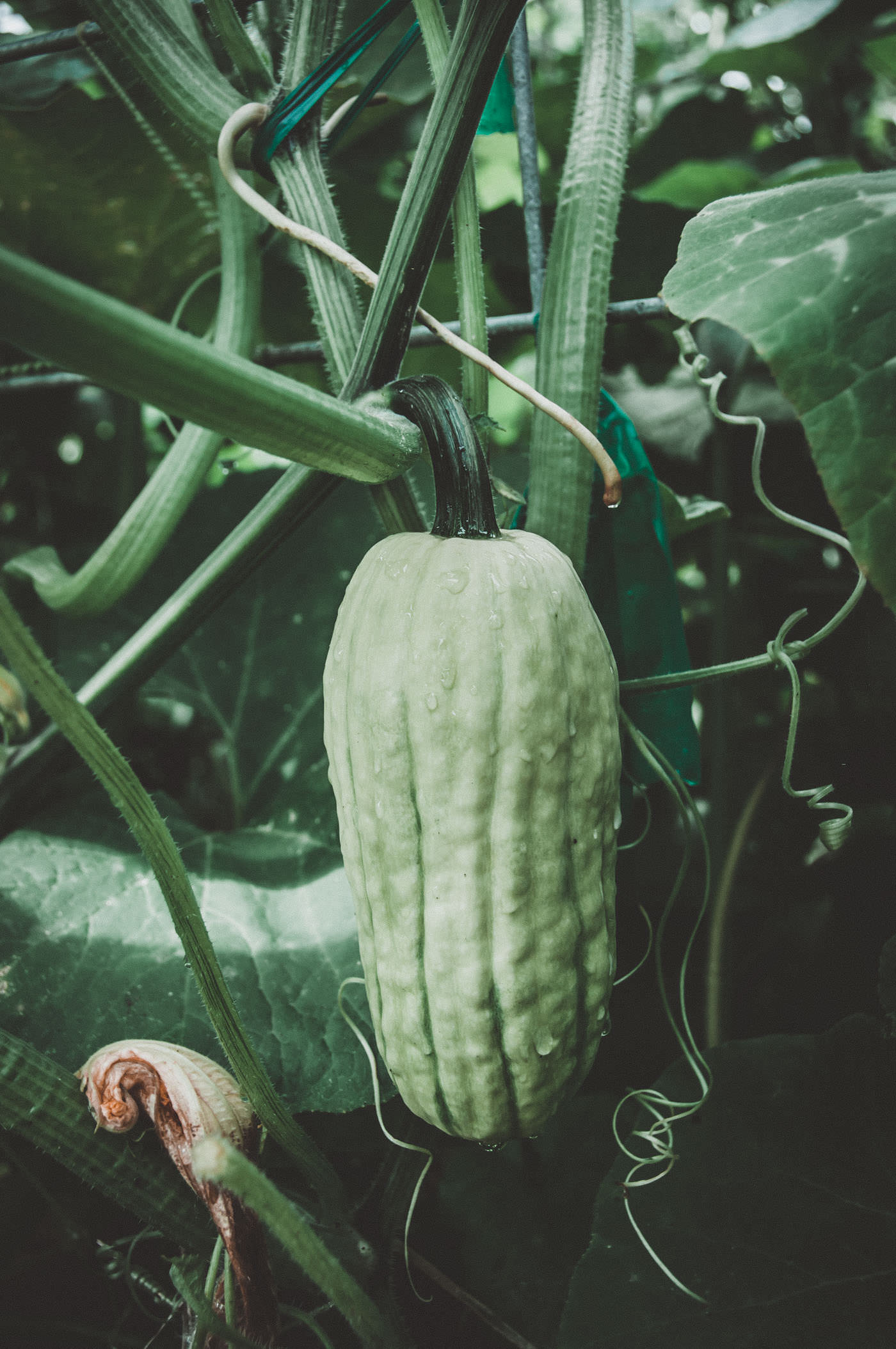
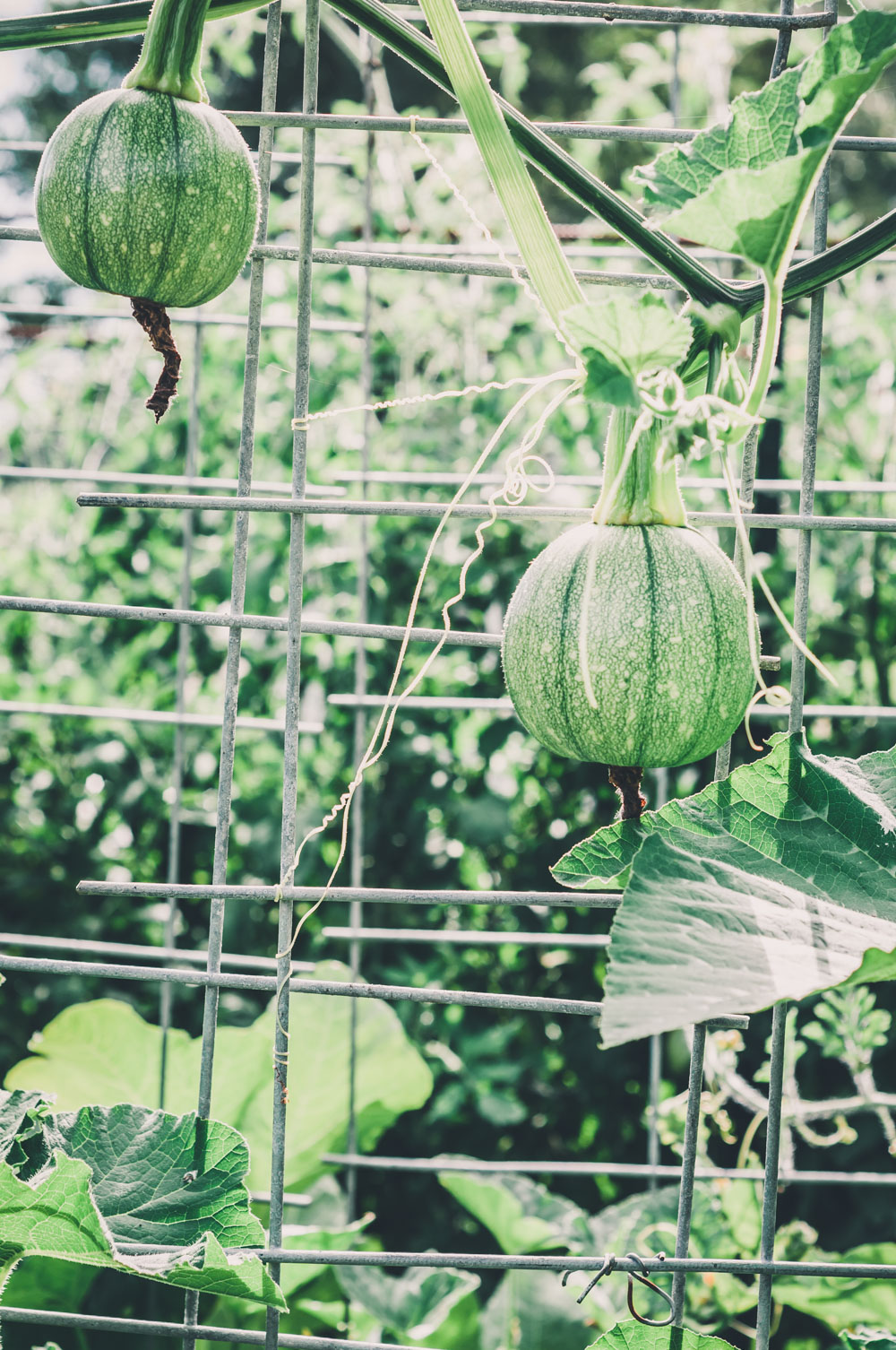
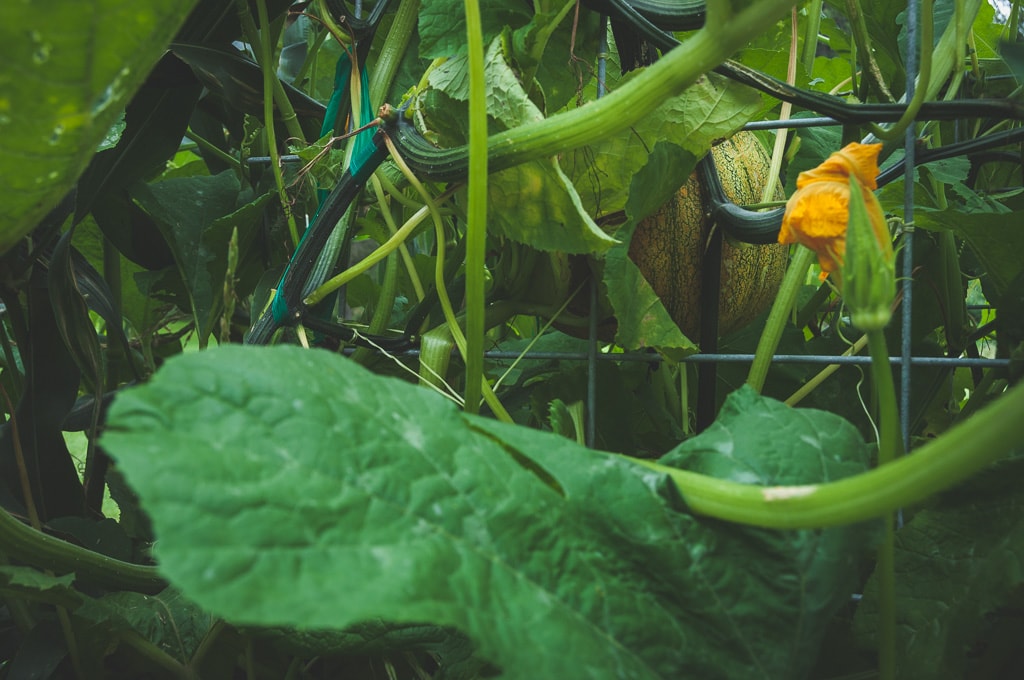
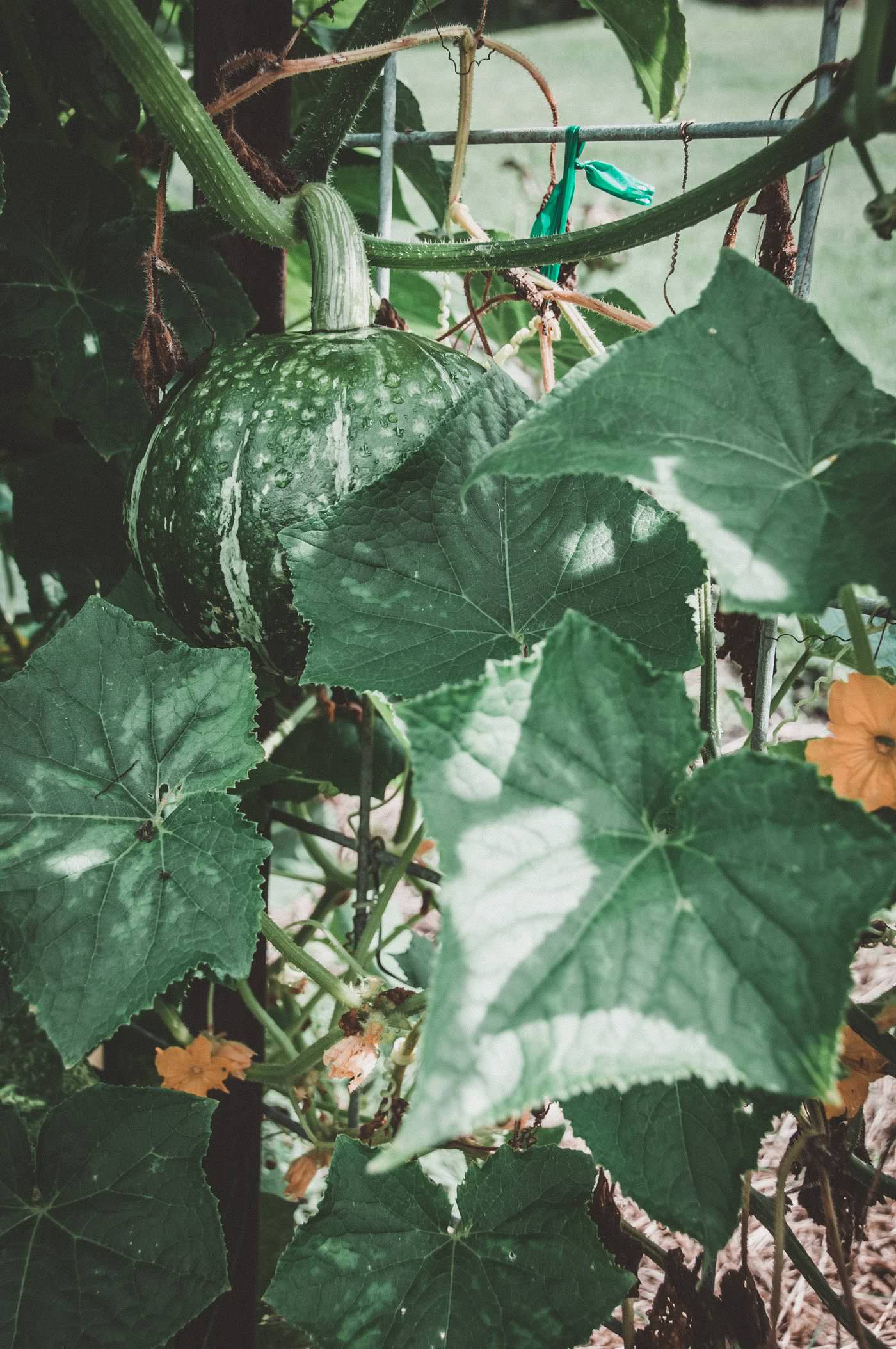
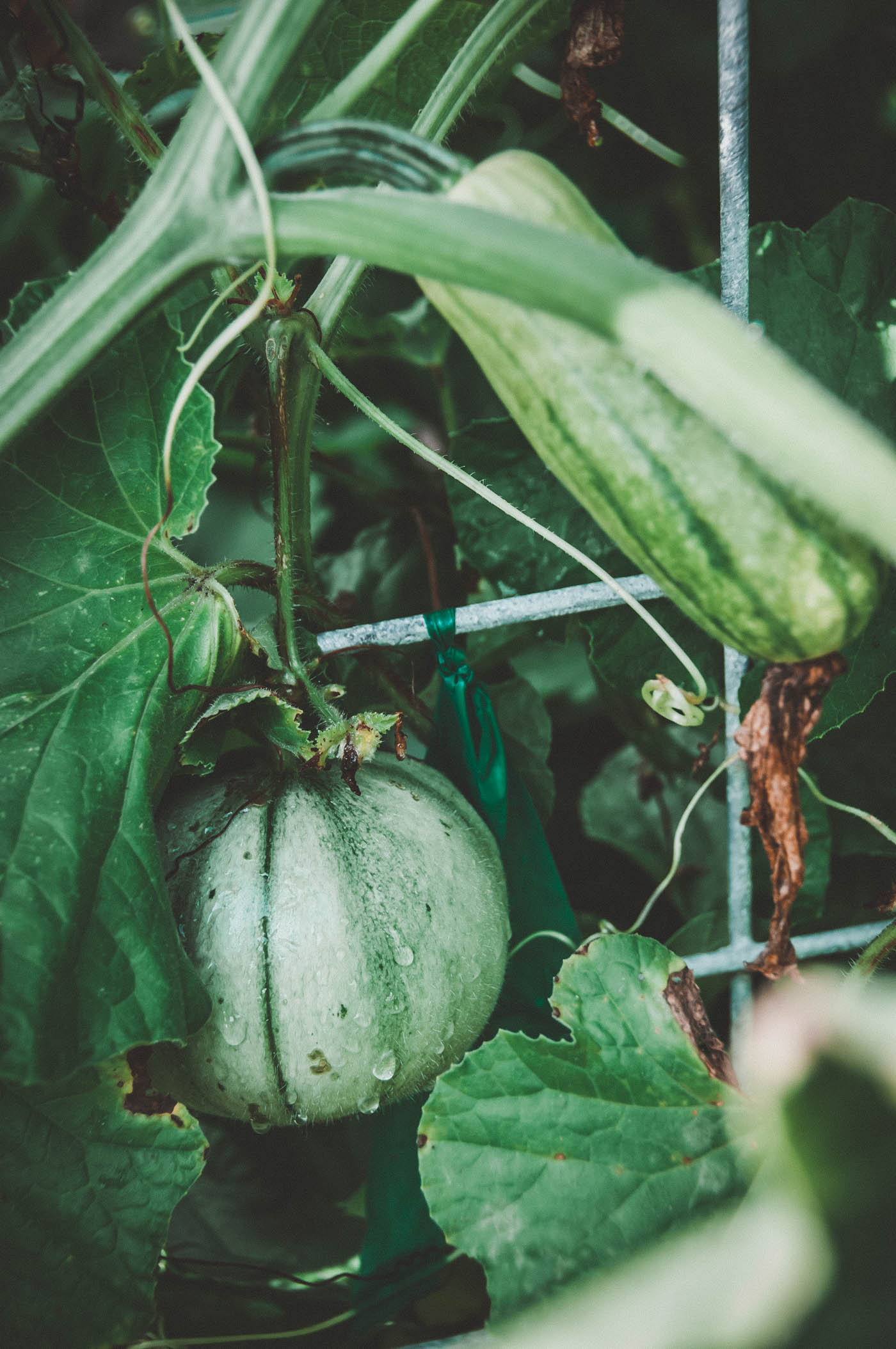
How to Grow Squash on a Trellis
In case I didn’t drive home how important this is, it’s imperative that your soil has the proper nutrients. I break this all down into detail in that free guide I mentioned, but essentially, you want a lot of nutrients because squash are heavy feeders.
We use Re-Vita Pro because it’s what we can get locally, but it’s a combination of organic material like laying hen manure, feather meal, bone meal, sulfate of potash, leonardite ore, kelp, and calcium. Compost is also a must: usually a thick layer over the entire bed. We also add azomite minerals and then foliar feed bi-weekly.
Butternut Squash Growing Tips and 4 Ways to Trellis It
FAQ
Is it better to grow butternut squash on the ground on a trellis?
Growing butternut squash on a trellis is often better than letting it sprawl on the ground, though it can be done either way. Trellising offers several advantages, including better airflow, increased sunlight penetration, and easier harvesting.
Can you grow butternut squash without a trellis?
Melons, on the other hand, need slings to keep their fruit from falling off the trellised vines. Butternut squash and some other winter squashes don’t need any extra help for their fruit. But I probably wouldn’t try trellising squashes that will exceed 10 pounds or so.
Do butternut squash plants need support?
Butternuts are usually vining plants and can be left to sprawl across the ground, or trained up supports.
Is butternut squash a bush or vine?
Butternut squash plants primarily grow on vines, not bushes. These vines can grow quite long, often exceeding 10 feet, and are known to sprawl.
Which squash is best for trellising?
Any squash producing individual fruits over 10 pounds each, is a good candidate for staying put, rather than making it be airborne. Yet, there are plenty of smaller squashes to choose from which are perfect for trellising, which you will find out about in a minute.
Can butternut squash grow on a trellis?
A: Growing butternut squash on a trellis has many benefits, such as making better use of space, increasing air flow, lowering the risk of pests and diseases, and making harvesting easier. 2. Q: What type of trellis is best for butternut squash?.
Do squash bugs eat trellised Butternuts?
Squash bugs like to hide at the base of the plant under leaves and debris, and then they lay their eggs on the leaves. Growing up on a trellis takes away their favorite place to live and makes them easier to spot so they can be taken care of quickly. Another pest, squash vine borers, are much easier to spot early on trellised butternut.
Can You trellis a squash?
Most squashes are too heavy for the average trellis without extra support, but some, like the summer squashes and smaller gourds, are perfect for vertical growth. Squash trellising can be as simple as crossing a couple of boards and threading some twine across to support the burgeoning vines.
Can you grow butternut squash vertically?
Other ways to support vertically growing squash include growing them on a fence, or in a fruit tree with lower branches that is either dead or alive. We’ll share some photos throughout this article and lots more at the end with some ideas for growing squash vertically. Here’s an easy way to build a butternut squash garden trellis.
Can butternut squash rot on a trellis?
When butternut squash spend months sitting on the ground, often on wet soil, their chances of rot dramatically increase. A lot of people place bricks, stone slabs, or plastic stands under the squash to keep them off the ground. You don’t have to do that on a trellis!
